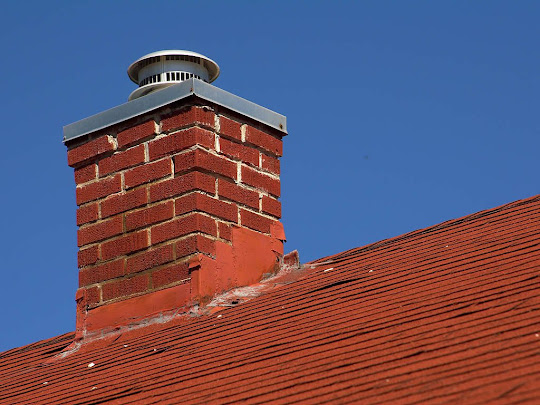What Is Chimney Flashing and Why Is It Important?
Chimney Flashing is the sheet of metal that maintains the waterproof seal at the chimney and roof intersection. The chimney flashing is frequently one of the main suspects if water is getting into the house through the ceiling close to a chimney.
What is Chimney Flashing?
Chimney flashing is a triangle-shaped metal sheet that lowers to the rooftop after wrapping around the chimney. It makes adjustments for differences in pitching and inclination to stop water from leaking into the house. The proper operation of a chimney depends on several distinct components. The chimney is shielded from the elements by a steel or polymer thermal coating known as chimney flashing.
The bottom of the stack has chimney flashing. Between the chimney and the roofline, a watertight seal is supposed to be created by the metal or sealant layers.
There is never a single material for your flashing. You have different options, you can select the one you want to have as your flashing material.
- Copper Flashing
Copper is the material which is most commonly used for flashing as it provides the longest life. It can be used as pan flashing and it can also easily be soldered. Copper is a hard material and copper flashing is worth it.
- Aluminium Flashing
Aluminium stands out from other materials due to its reasonable pricing and high level of durability. With its capacity to bend at the corners, aluminium’s moldable quality makes it simple to obtain any shape. In contact with mortar and cement, coated aluminium can be utilised without risk.
- Steel Flashing
The main benefit of stainless steel is that it may be used successfully in acid rain and other harsh environmental conditions due to its resilience property. With no negative consequences, it can be directly positioned with mortar and concrete and is least impacted by salt spray.
- Vinyl Flashing
Vinyl flashing is another common option for contractors because it is lightweight. It costs a little more than aluminium. Although not the ideal material for chimneys, it is frequently used in regions with mild temperatures. In environments with a lot of rain or humidity, vinyl can become brittle and fracture or break, making it a less-than-ideal material.
Why is chimney flashing Important?
How do you Know When Your Flashing is Leaking?
Don’t wait until you have significant water damage before having your chimney flashing repair. If it is already failing or it was placed incorrectly, or it is already breaking down, you must think to take action. If you have an uninterrupted view, make it a habit of walking outdoors and simply looking up at your chimney flashing to look for any defects or trouble, such as loose or crumbling bricks. Additionally, you could pay chimney inspectors to perform a comprehensive inspection once a year. This can help identify any issues with chimney flashings before they become more serious.
You should contact a chimney expert right away to determine the problem if you start to notice leaks or water infiltration around your fireplace. These indications include a buildup of water at the base of the fireplace, the sound of water dripping (even though you can’t see it), rusty dampers, and water stains on the inner wall next to the chimney.
How Do I Know If I Need To Repair My Chimney Flashing?
You can notice a few things and you will be sure that the chimney flashing needs to be repaired. Below are the few instances when you need to get it repaired.
- As a result of using it for a long time, the aluminium material is corroding.
- It will be necessary to replace the flashing if it is severely corroded or eroded. Shingles must be taken off and replaced, and flashing must be fastened to the roof using specialist tools.
- As a result of water damage over time, the flashing looks to be twisted.
- Around the edges of metal flashing panels, rust is starting to form.
- Since many chimneys aren’t attached to the house’s frame, your home has probably settled or moved, which makes leaks more likely.
- When you find that the wood in your attic or roof deck is rotting and your bricks are discoloured.

.jpg)
.jpg)
Comments
Post a Comment